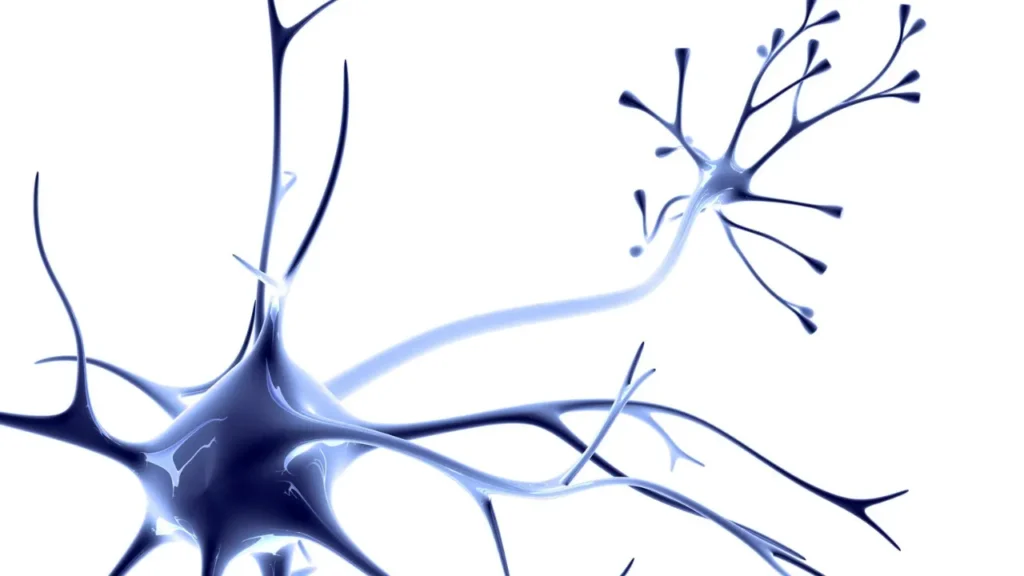Belladonna, also known as dangerous nightshade or atropa belladonna, is a perennial herbaceous plant that grows in Europe, North Africa, and Western Asia. Since ancient times, the plant has been used in traditional medicine and as a weapon. In recent years, there has been more and more interest in belladonna as a food supplement because it might be good for your health. This article will explain what belladonna is, its health benefits, the best way to take it, any side effects, possible drug interactions, and how to use this powerful supplement safely. We will look into the science of belladonna and how it affects the body and brain from a scientific point of view.
You May Also Like:
Enjoy a Healthy Heart and Happy Life: Harness These Holistic Coenzyme Q10 Benefits
Quicker, Stronger and Smarter: How to Improve Cognitive Function by Prioritizing Your Brain Health
Belladonna: Benefits, Dosage, Side Effects, Drug Interactions, And Other Important Information is an original (NootropicsPlanet) article.
Nature of Belladonna
Belladonna is in the family of plants called solanaceae, which also includes potatoes, tomatoes, and eggplants. The plant has bell-shaped flowers that are dark purple and shiny black berries. The word “belladonna” means “beautiful lady” in Italian. This name comes from the fact that products from the plant were once used to make women’s pupils bigger, which made them look more attractive and seductive.
Tropane alkaloids, like atropine, scopolamine, and hyoscyamine, are the main substances that make up belladonna. Anticholinergic means that these alkaloids stop the neurotransmitter acetylcholine from doing its job in the central and peripheral nerve systems. Belladonna’s anticholinergic effects can affect many parts of the body, such as the way the heart, smooth muscles, and glands work.
Health Benefits of Belladonna
Belladonna has been used in the past to treat a wide range of illnesses, and new scientific studies have shed light on its possible medical uses. Some of the most important ways belladonna can benefit your health are:
- Anticholinergic Properties: Belladonna has been used to help with pain for hundreds of years. Its anticholinergic properties can help relieve irritable bowel syndrome (IBS) and menstrual cramps by reducing muscle spasms and inflammation. Belladonna can also help with neuropathic pain, according to research, but more studies are needed to prove this effect.
- Support for the Lungs: Because belladonna is an anticholinergic, it can reduce bronchial fluids and bronchospasms, which can help those with asthma and chronic obstructive pulmonary disease (COPD). Some studies have shown that belladonna can help the lungs of people with asthma work better and feel better.
- Regulation of the Digestive System: Belladonna has been used to treat digestive problems like peptic sores, gastritis, and esophageal reflux. Its anticholinergic effects can lower the amount of acid made by the stomach and relax the smooth muscles in the GI system, which can help relieve symptoms.
- Muscle Spasm and Cramp Relief: Belladonna has been used to treat muscle spasms and cramps in those with Parkinson’s disease and multiple sclerosis, among other illnesses. Its anticholinergic features can help relax smooth muscles, making them less likely to spasm or move on their own.

Chemistry of Belladonna
Most of belladonna’s chemical parts are tropane alkaloids, which are organic molecules with nitrogen. Atropine, scopolamine, and hyoscyamine are the most important tropane chemicals found in belladonna. Most of these chemicals are found in the plant’s leaves, roots, and seeds. The amount of these alkaloids can change based on the stage of growth of the plant, its environment, and its genes.
Atropine is a mixture of d-hyoscyamine and l-hyoscyamine, and scopolamine is a different alkaloid with a similar structure but a different chemical structure. The bicyclic structure of these compounds, which is made up of a pyrrolidine ring connected to a piperidine ring, gives them their special pharmacological effects.
Physiological Properties of Belladonna
The effects of belladonna on the body and brain are caused by the tropane alkaloids atropine, scopolamine, and hyoscyamine, which work as competitive antagonists at muscarinic acetylcholine receptors (mAChRs). Acetylcholine is a neurotransmitter that helps regulate muscle contraction, heart rate, gland secretion, and cognitive abilities, among other things. The chemicals in belladonna have an anticholinergic effects because they stop acetylcholine from doing its job.
There are five kinds of muscarinic acetylcholine receptors (M1–M5), and they are found all over the central nervous system and the nerves outside of it. The effects of belladonna chemicals on the body depend on which receptor sub-types they bind to:
- M1 Receptors: Most of these receptors are found in the brain and the parietal cells of the stomach. Antagonism at M1 receptors can cause brain damage, memory loss, and can cause less acid to be made in the stomach.
- M2 Receptors: Most M2 receptors are found in the heart and in smooth muscles. Blocking these receptors can make the heart beat faster and make smooth muscles less likely to cramp and contract.
- M3 Receptors: Smooth muscles, glands, and the endothelium all have M3 receptors. Their interaction can cause the airways to open up, glands to make less oil, and smooth muscles in the digestive and urinary tracts to soften.
- Receptors M4 and M5: These receptors are not very common, and not much is known about them. But it is thought that the way these receptors are blocked, that it may add to the effects of belladonna alkaloids on the central nervous system, such as drowsiness and hallucinations.
Some evidence shows that belladonna alkaloids, especially scopolamine, can interact with neurotransmitter systems other than muscarinic receptors. For example, scopolamine has been shown to affect the release of dopamine and serotonin in certain parts of the brain. This may be one reason why it can change your mood.

Optimal Dosage of Belladonna
Because belladonna is so poisonous, it can be difficult to determine how much is safe to take. Since the therapeutic dose is close to the toxic dose, it is important to use this substance with care. The dose should be different for each person based on things like age, weight, and other health problems.
In general, you should take between 0.3 and 1.0 milligrams of belladonna per day, split into two or more doses. Standardized belladonna extracts can help make sure that the amount is always the same and safe.
Before taking belladonna supplements, it’s important to talk to your doctor or nurse. They can help you figure out the right dose and keep an eye out for any side effects.
Side Effects of Belladonna
Due to its potent anticholinergic properties, belladonna can cause a range of side effects, some of which may be severe. Common side effects include:
- Dry mouth
- Blurred vision
- Constipation
- Dizziness
- Urinary retention
- Tachycardia (increased heart rate)
More severe side effects can occur at higher doses or in individuals with certain underlying health conditions. These may include:
- Delirium and hallucinations
- Seizures
- Coma
- Respiratory depression
- Cardiovascular collapse
It is essential to recognize the signs of belladonna toxicity and seek immediate medical attention if any severe side effects occur.

Potential Substance Interactions with Belladonna
Belladonna can react with other drugs and chemicals, which can cause dangerous side effects or make them less effective. Some of the most important ones are:
- Anticholinergic Drugs: Using belladonna with other anticholinergic drugs, like antihistamines, tricyclic antidepressants, and antispasmodics, can increase the risk of side effects and poisoning.
- Cholinergic Drugs: Belladonna can block the effects of cholinergic drugs like donepezil and rivastigmine, which are used to treat Alzheimer’s disease and other cognitive problems.
- Anticoagulants: It has been said that belladonna interacts with anticoagulants like warfarin, making the chances of bleeding higher.
Potassium Supplements: If you take belladonna with potassium supplements, you may be more likely to get stomach problems.
Responsible Use of Belladonna
Given the possible risks of taking belladonna supplements, it is important to make sure they are used in the right way. Some tips on how to use belladonna in a safe and effective way are:
- Talk to a doctor before taking belladonna supplements to find out if they are right for your needs and health.
- Use standardized belladonna products to make sure you get the right dose every time.
- Start with a small dose and, if needed, slowly increase it with the help of a health care expert.
- Keep an eye out for possible side effects and see a doctor if they are serious.
- Know about possible drug interactions and tell your doctor or nurse about any medicines or vitamins you are taking.
Belladonna:
Conclusion
In short, the way belladonna works in the body is mostly through the way its chemicals block muscarinic acetylcholine receptors. This causes a number of anticholinergic symptoms, such as lessening the occurrence of muscle cramps, , a change in heart rate, and trouble thinking. More research is needed to fully understand how belladonna affects the body and brain, as well as how these effects might be used to benefit our overall health.

References:
- Anticholinergic Drugs and Their Effects on the Central Nervous System. Retrieved from: https://www.ncbi.nlm.nih.gov/pmc/articles/PMC3351655/
- The Pharmacology of Atropa Belladonna: A Historical Perspective. Retrieved from: https://www.ncbi.nlm.nih.gov/pmc/articles/PMC4681356/
- Muscarinic Receptor Subtypes: Their Distribution, Function, and Implications for the Therapeutic Use of Anticholinergics. Retrieved from: https://www.frontiersin.org/articles/10.3389/fphar.2020.00926/full
Important Note: The information contained in this article is for general informational purposes only, and should not be construed as health or medical advice, nor is it intended to diagnose, prevent, treat, or cure any disease or health condition. Before embarking on any diet, fitness regimen, or program of nutritional supplementation, it is advisable to consult your healthcare professional in order to determine its safety and probable efficacy in terms of your individual state of health.
Regarding Nutritional Supplements Or Other Non-Prescription Health Products: If any nutritional supplements or other non-prescription health products are mentioned in the foregoing article, any claims or statements made about them have not been evaluated by the U.S. Food and Drug Administration, and such nutritional supplements or other health products are not intended to diagnose, treat, cure, or prevent any disease.


